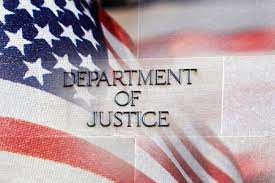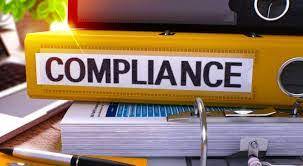A Robust Consequence Management System (Part I of III)

The Department of Justice has laid down a marker – companies would be smart to understand the significant change in ethics and compliance program expectations. Companies that ignore this new landscape are gambling with their financial security and their reputational value. Every company that has suffered through a DOJ investigation knows how damaging and draining such an experience can be.
The purpose of an ethics and compliance program is to prevent and detect misconduct. A key component for this mission is promotion of culture of ethics and compliance. In addressing this overall goal, DOJ’s March 2023 modifications to its Evaluation of Corporate Compliance Programs included the substitution of the element Incentives and Discipline with the more robust and holistic concept of Consequence Management System. If you examine the definition and requirements for such a system, DOJ’s vision and objective for corporate compliance programs includes new and important elements and principles.

A key requirement in this area is the importance of Transparency. Companies have to promote an employee reporting system built on transparency with respect to four essential processes: (1) incentives and disincentives; (2) employee reporting; (3) internal investigations; (4) disciplinary actions.
Incentive systems have to be outlined in a compliance compensation system policy that includes review of sales, compliance, and performance compensation systems that are conditioned on satisfaction of specified triggers. An internal process has to be established to ensure that incentives risks are properly balanced and will not skew performance to encourage misconduct or circumvention of basic ethical requirements.
A perfect example of an unhealthy balance is the Wells Fargo sales incentives program that the board and senior management failed to assess for misconduct and incentives risks. The failure of Wells Fargo to control these risks resulted in a devastating collapse of Wells Fargo’s banking operations, multiple regulatory and legal interventions and continuing restrictions of Wells Fargo’s ability to grow its business. After multiple CEOs, Wells Fargo still suffers compliance set backs on a regular basis and continues to suffer from the legal, regulatory and reputational damage.
While Wells Fargo is an extreme example, the implication for companies is significant enough to mandate a wholesale review by companies of their incentive structure and the implications for promoting an ethical culture. As part of this review, companies have to weigh: the percentage of senior executive compensation that is specifically conditioned on ethical behavior; the existence of overall sales incentives and contingent compensation tied to meeting targets that may inadvertently encourage circumvention of legal and ethical behaviors; and the existence of positive incentives to encourage ethical behaviors and meeting ethics and compliance program requirements.

A second essential element of a robust Consequence Management System is establishment of an effective employee reporting system. The definition of such a system is not limited to a hotline and case tracking system; to the contrary, a true employee reporting system includes reports to supervisors, walk-ins to Human Resources and/or Legal and Compliance, and an automated reporting system. A company that restricts or only tracks employee reporting systems collected through a hotline platform is, by definition, restricting its ability to track and monitor all employee concerns.
Third, the company’s employee reporting program necessarily requires companies to establish, publish and promote its internal investigation program and its commitment to protection of employee reporters and whistleblowers. Such a program has to operate promptly, fairly and consistently to build trust with employees. If a company demonstrates its commitment to Organizational Justice, then employees will “trust” the reporting and investigation system to deliver fair results. This information flow is essential to a healthy organization – investigating employee concerns provides important “root cause” lessons that can be used to inform changes to other elements of an ethics and compliance program.
The healthy circle of reporting requires that companies protect all reporters – employees, third parties and whistleblowers — from attempts to obstruct any investigation or retaliate against any employee through subtle and overt techniques. A company must do more than just mouth an anti-retaliation policy; it has to demonstrate its commitment through actions, investigations and consequences to those employees, managers and senior executives that attempt to retaliate or successfully retaliate against employee reporters and whistleblowers.

Finally, as part of a company’s commitment to Organizational Justice, the company’s Consequence Management System has to demonstrate its commitment to consistent and fair resolutions of investigations. It is obvious that disparate treatment of comparable cases will only undermine employees’ believe in the company’s willingness to root out misconduct and fix problems. It only takes one case of disparate treatment for employees to begin to question the company’s overall fairness. Once the trust is broken, it is almost impossible to restore any sense of trust and integrity.
Each of the elements discussed above has to adhere to a fundamental principle – transparency. The more that is disclosed, the more an organization can claim its commitment to an open dialogue and accountability. When disclosure or transparency is clouded or occasional, employees quickly form a lasting impression and believe – my organization is unwilling to live up to its promise of fairness and organizational justice.
















Mr. Volkov,
Corporate ethics and compliance issues are simply a by-product of a much larger problem investors have to face today. By far, the key violators are financial institutions that own the control of retirement investor’s resources domiciled in States with passive regulators. These repeat offenders keep finding new excuses for missing funds, but the root of the crime is greed and often much deeper issues like drugs controlling day-to-day decisions in the Boardrooms. Several years ago a key corporate executive who managed a multi-billion dollar 401k retirement fund employed by a large insurance company was arrested in a major city for kidnapping a young hispanic male at gunpoint so the young man could find him crack cocaine. The executive was later arrested and released on a misdemeanor.
Yes, drugs do exist in the corporate boardrooms, and the public has a right to know theses facts when it involves their life savings. I haven’t read your book “Pointing the Finger,” but plan to do so.